Tai Chi Stances
These are descriptions and illustrations of the main Tai Chi Chuan stances which are most exemplified in the Yang style and in ShiBaShi QiGong. The fists are drawn at the waist to focus attention on the foot and body positions.
The height and distance of the stances will be determined by the capabilities of the practitioner and it is important not to strain the muscles or over extend the joints. Tai chi is made up of connecting postures, so transitions from one position another must be slow and controlled. Postures must always allow for smooth flow of Qi and maintain integrity for strength and balance.
Wuji stance
This stance is commonly used during preparation. Feet are slightly wider apart than the shoulders, weight is evenly balanced on both legs and feet, with the knees soft and the body upright.
When at rest, the arms are by the side, with space under the armpits.
The purpose of this stance is to clear the mind and to bring focus to the lower "dantian", to settle the breathing and to release tension from body and the mind and to feel grounded and connected to the earth.
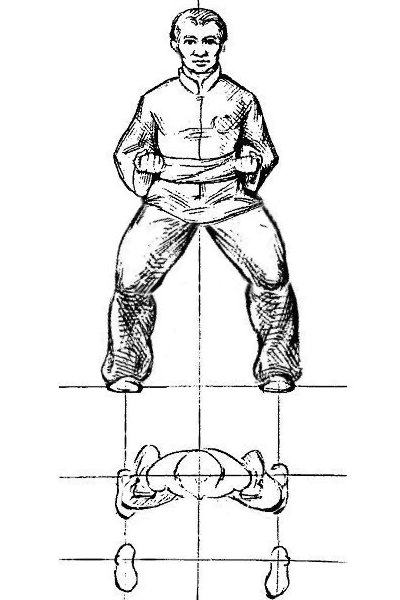
Horse stance
Legs are wide, as if sitting on a horse, with the weight evenly distributed on each leg.
The upper body is upright, both "kua" (groins) are open and the coccyx (tail bone) is facing the floor, or "tucked in".
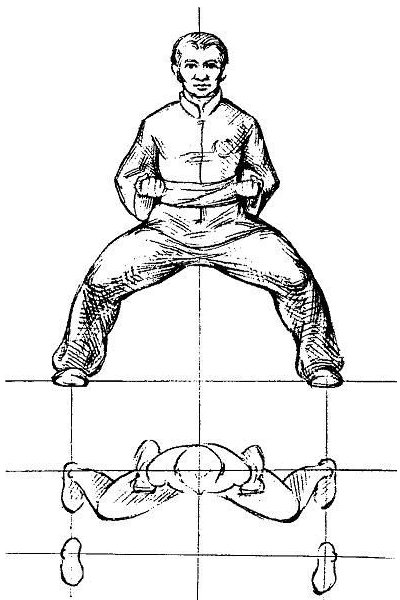
L or Half-Horse stance
Similar stance to Horse Stance, but with one foot turned out and head turned in the direction of the foot.
This stance is also a preparation for either moving in the direction of the turned-out foot or to the front.
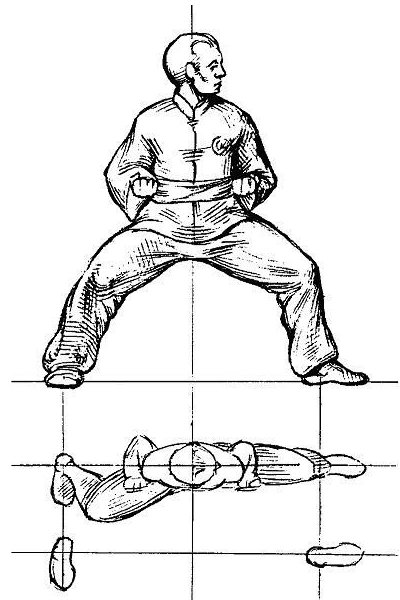
Bow stance
This stance is most commonly used at the end of a movement such as Single Whip, Brush Knee, Part the Wild Horse's Mane or Grasp the Bird's Tail. This is a strong stance because of the trianglular shape at the base.
One leg is in front of the other, shoulder width apart, front foot facing forward, back foot turned out about 45°, back knee unlocked. 70% of weight is on the front leg, with the knee over the toe and in line with the foot. Hips face straight forward.
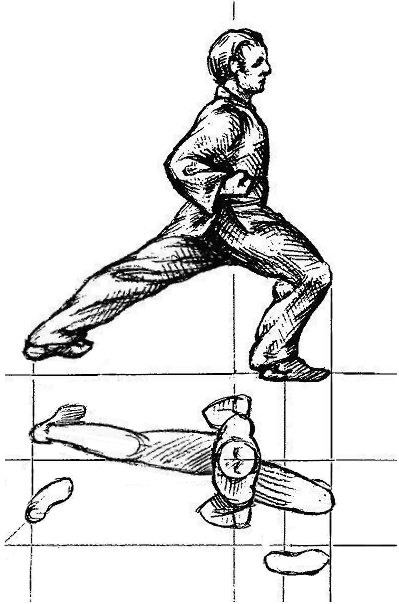
Low or Tiger Stance
This stance is seen in Snake Creeps Down before the outstretched foot is turned out and the body weight is transferred onto that foot.
The position is achieved by bending the supporting knee, stepping to the side and slightly back, then sinking low on the supporting leg.
This position as illustrated requires substantial leg strength and flexibility and should not be attempted at this level without considerable practice.
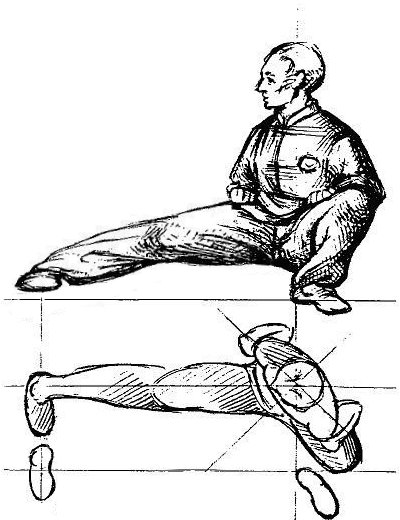
Empty Step
The Empty Stance or Empty Step is a preparation position for either forward or backward step, and is also used in positions such as White Crane Spreads Its Wings and Neeedle at the Bottom of the Sea.
The body is maily supported by the back leg, with 95% of the weight and the other leg is forward with the toe touching the floor, with only about 5% weight. This stance is also preparation for a forwards or backwards step.
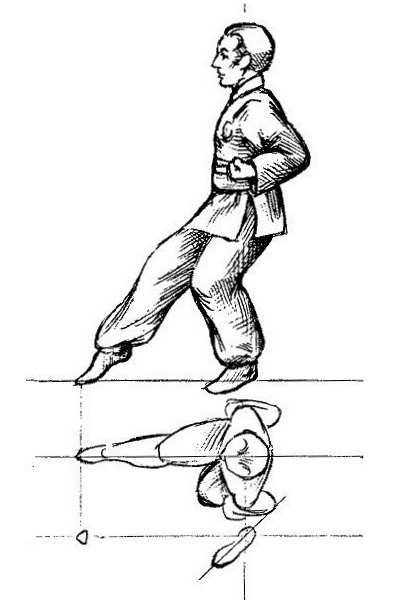
Empty Cat Stance
This stance is used in Play The Lute and also as a preparation for a backwards step such as Repulse Monkey.
The body is maily supported by the back leg, with 95% of the weight and the other leg is forward with the heel touching the floor, with about 5% weight.
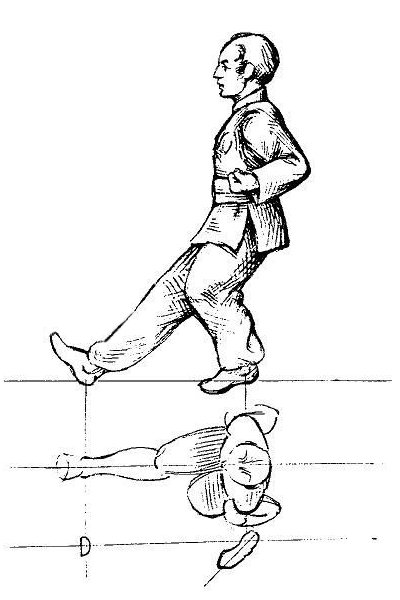
Crane Stance
This stance is used in the Crane Position and also Golden Rooster Stands on One Leg.
All of the weight is on the supporting leg with the foot turned out at 45°, while the other leg is raised with the knee bent, foot back and toe pointing down.
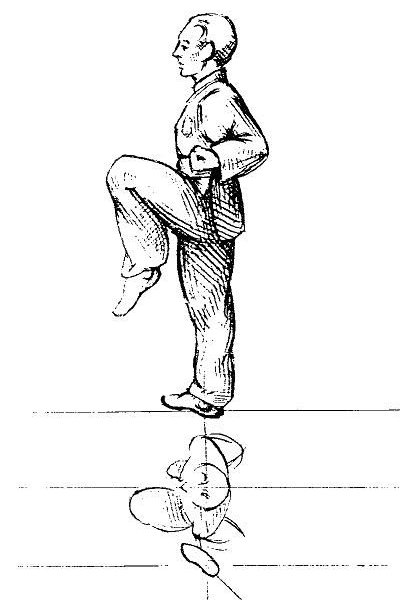
High Lotus Stance
This stance is transitional and is used in preparation for a kick by the rear foot or in QiGong movements such as Immortal Points the Way.
The main principle is that about 90% of the weight is on the front foot with the rear toe just resting on the ground to provide stability.
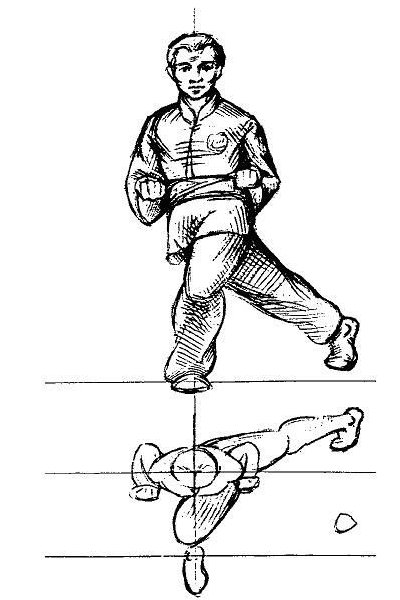
Squat Stance
The Squat or Lotus Stance is also transitional and preparation for an expanded movement. It is also used as preparation for a turn to the rear as the body rotates as it rises.
Again, about 90% of the weight is on the front foot with the rear toe resting on the ground to provide stability. The rear knee may or may not touch the ground.
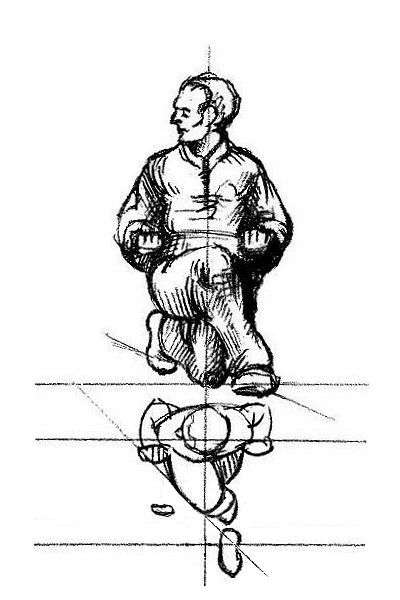
Sincere thanks to Jenny Harrison at Rising Moon Tai Chi for much of the information, Dr. G. S. Torres of Phoenix Dragon Kung Fu and Guy Robinson of Atlanta, Georgia for permission to use his artwork.
